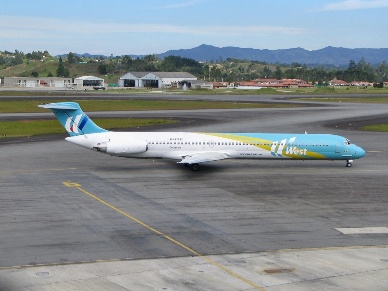Double engine flame-out was reported by the crew of the West Caribbean Airways Boeing MD-82 which crashed fatally on 16 August, according to preliminary data released by

From visual evidence at the scene, the Pratt & Whitney JT8D-200 engines both appear to have regained power shortly before impact, but investigators have been hampered by the flight data recorder’s failure to record a number of parameters – including the left engine pressure ratio (
The US National Transportation Safety Board (NTSB) in a notice today says it agrees with the CIAA’s initial findings, which confirm that the
Information from the flight data recorder (FDR) indicates that the aircraft began a normal climb to FL330 before leveling off and accelerating to Mach 0.76.
“About 90sec after reaching Mach 0.76, the airspeed began to steadily decrease,” says the CIAA. “The horizontal stabilizer moved from about two units nose-up to about four units nose-up during this deceleration.”
Roughly 3.5min from the end of the recording, the Mach number fell to 0.60, the autopilot was disengaged and the aircraft began descending from FL330.
“As the airplane descended past about FL315, the airspeed continued to decrease and the right engine
Data recovered from the MD-82’s cockpit voice recorder shows that about 8min before the end of the recording, while the aircraft was level at FL330, the flight crew discussed weather conditions, including possible icing conditions.
“The flight crew also discusses turning on engine and airfoil anti-ice,” says the CIAA, which does not state whether the systems were in fact switched on.
About 3.5min before the end of the recording, the crew requests and is cleared to descend to FL310. After another 30 seconds “an audio warning similar to altitude alert is heard, followed 22s later by a sound similar to stick-shaker…and then an aural stall warning alert”.
The report adds that the flight crew “does not declare an emergency and they do not refer to any checklist during the descent”.
It continues: “About eight seconds before the end of the recording, a ground proximity warning system (GPWS) warning starts to be heard and continues to the end of the recording.”
The wreckage was confined to a relatively small triangular area – 205m long by 110m wide at its greatest extent. Both engine compressors showed signs of high-speed rotation, and the horizontal stabilizer was found at the full nose-up – 12 units – setting.
Once there, additional inspections will be carried out.
Source: Flight International



















